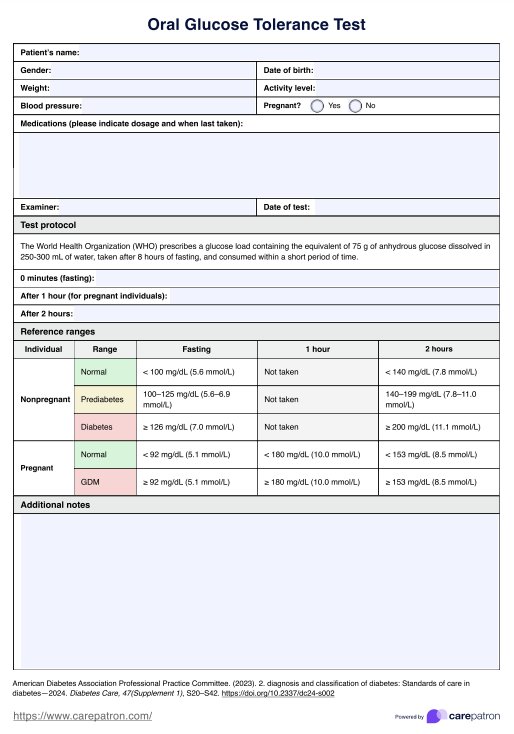A normal Oral Glucose Tolerance Test (OGTT) result for nonpregnant individuals includes fasting blood glucose levels under 100 mg/dL and 2-hour post-glucose levels below 140 mg/dL. For pregnant individuals, normal ranges are fasting levels under 92 mg/dL, 1-hour levels below 180 mg/dL, and 2-hour levels below 153 mg/dL.

Oral Glucose Tolerance
Understand the body's response to glucose with an Oral Glucose Tolerance Test, a diagnostic test for measuring blood sugar levels post-glucose intake.
Oral Glucose Tolerance Template
Commonly asked questions
Reading Oral Glucose Tolerance Test (OGTT) results involves comparing measured blood glucose levels at fasting, 1-hour, and 2-hour post-glucose intake against standardized thresholds. Elevated plasma glucose values can indicate abnormal glucose tolerance, prediabetes, or diabetes. The actual OGTT test report format may vary depending on the laboratory's preferred report format.
The WHO-prescribed rules for a 2-hour Oral Glucose Tolerance Test (OGTT) require an 8-hour fasting period before the test, during which patients consume a 75g glucose solution. Blood samples are taken before ingestion and at set intervals to measure the body's plasma glucose response.
EHR and practice management software
Get started for free
*No credit card required
Free
$0/usd
Unlimited clients
Telehealth
1GB of storage
Client portal text
Automated billing and online payments











